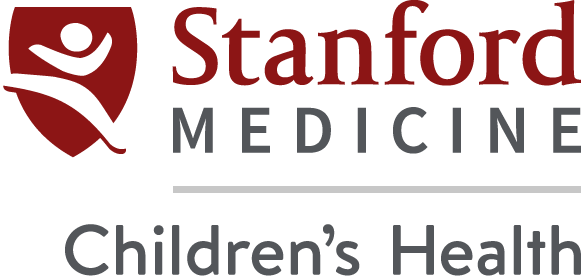Do you want to stay healthy and exercise regularly, but you are dealing with an injury or illness? Whether you are sidelined temporarily, or coping with more chronic limitations, there are still ways you can embrace and enjoy exercise by making adjustments to your routines. To learn more, HealthySteps spoke with Gordon O. Matheson, MD, PhD, professor of orthopaedic surgery (sports medicine) at Stanford Health Care.
If you are feeling some pain as you exercise, should you stop?
Most people who exercise regularly can tell the difference between the discomfort and stiffness from exercise (delayed-onset muscle soreness) versus the pain from an injury. If pain doesn’t subside within a few days, or if it is sharp in nature or accompanied by other signs (such as swelling, clicking, or reduced range of motion), then it is best to have a physical examination and diagnosis.
By and large, exercise participation in the presence of overuse injuries can usually be continued in a modified fashion that maintains movement but reduces or eliminates the offending activity.
If you have a foot or knee injury, should you stop all exercise, or change your exercise routines to avoid using the injured limb?
There are so many different types of exercise that it is usually possible to develop a program that accommodates injuries to the foot and knee. This may require the expertise of a health coach or fitness trainer, but it is well worth the effort and cost to find something that works for you. Sometimes painful joint conditions are chronic, as can be the case with arthritis. The same holds true here. Movement of joints and muscles is important for bone and joint health. Fortunately, programs can be devised that work around almost any musculoskeletal condition.
If you have a chronic condition such as heart disease, diabetes or cancer, can you still exercise?
In almost all cases, yes. Exercise is a powerful way of developing increased capacity, aiding recovery and rehabilitation, and increasing self-efficacy. Start at a level that is enjoyable and attracts you to return. A difficult program — one that requires travel, expensive memberships, or complex equipment — can actually become an insurmountable obstacle to participation. The most important thing is to develop a plan to incorporate exercise into your life every day — not as in “Oh, I have to exercise today,” but rather “This is the one time in the day I can spend taking care of myself.”
Once that framework is developed, no matter what level of exercise, you can build upon it. Exercise programs for chronic disease should include a couple of days per week of aerobic conditioning and 2-3 days per week of higher intensity, strength work. Give yourself six months or even a year to gradually build to a level of intensity that yields noticeable results but remains enjoyable.
Certain people who are injured or ill may feel cooped up, isolated, and longing for the more vigorous exercises they had been doing previously. What advice can you give them?
Regular exercise has two main effects. One is that exercise builds greater capacity within your body; it increases bone, cartilage, muscle, joint and heart health; and helps manage weight. The other effect is something known as self-efficacy or confidence. Both are equally important. Even if you aren’t exercising vigorously, the fact that you are taking time to do something good for your body sets the mental stage for further development of your exercise goals. Once you incorporate exercise as a means of increasing the health of your daily life, you will experience an empowerment that helps to overcome the feelings of frustration and limitation.
If you are very sick, is it OK to exercise?
In general, I wouldn’t recommend exercising if you are acutely ill. Competitive athletes have different considerations, and we sometimes need to weigh the issues in advising them regarding participation. We focus on fever as a contraindication to participation, and we also give some thought to whether or not the illness is contagious. Bacterial infections are typically contraindications for participation.
For a recreational athlete, I would advise resting and recovering. When we exercise, there is a competition of sorts between the raised metabolic rate required for fighting an infection and the increased requirement, during exercise, for substrates — such as ATP oxygen needed by the working muscle. Therefore, the best advice is to recover from an illness before resuming exercise.
… any final thoughts?
Rather than think about a short-term exercise program to “get in shape,” think about a life-long commitment to your health. The changes in your body will not happen in just 6 weeks, but they will continue to happen over years with adaptations that you will notice and possibly never have predicted.
What to do when you are sidelined from exercise
Tips from Joyce Hanna, MA, MS
Associate director of Stanford Health Improvement Program (HIP)
1. Keep up your social contacts.
If you usually exercise with friends — hike with them, go to the gym with them, play tennis with them, having to curtail those physical outings can cut you off from your social life and friends who previously furnished you with pleasure, fun, and companionship. It is important to address that loss by arranging to meet for coffee or snack with your friends after their workouts. Take the initiative and try to arrange some visits that work with everyone’s schedules. Also, it’s an opportunity to see some old friends that you haven’t had time to keep up with. How about branching out and even making some new friends? Again, this might be something you’ve never had time to do before. In other words, don’t let yourself get isolated. We need our friends and the support they give us!
2. Use that time you used to spend exercising doing something that empowers you.
It’s helpful for your mental state to use that time you spent exercising to do something that gives you a feeling of accomplishment. Maybe it would be working on a project at work or home that you’ve been meaning to get to. Pick a project that will help give you that feeling of accomplishment that exercise has given you.
3. Don’t let your body check out.
Exercise keeps you aware of the state of your body. When you’re running, or exercising vigorously, you get some feedback if you’ve eaten too much or too little. Your body sends you a message if you’re dehydrated. You can feel bloated and stiff if you’ve had too much salt or alcohol the night before. You have trouble finishing your workout if you’ve gone without enough sleep for a number of nights. All this feedback works to help you take care of yourself and to pay attention to habits that affect your health. So it’s important to pay attention to your body if you’re not able to exercise. Don’t check out and get numb to the effects of your eating, drinking, and sleeping habits. Pay attention.
If possible, keep up some form of exercising. One way to keep yourself from checking out is to make sure you’re doing some stretching, if that’s appropriate in your condition. Stretching is a great way to keep aware of how your body is feeling.
Keep doing some form of exercise, even if it’s not what you usually enjoy doing. You might actually find some other activities you enjoy — ones you may want to keep doing when your down time is over. If you have a lower body injury, exercise your upper body with some resistance work (weights), and vice a versa. Move around and avoid sitting too long. In summary, keep in touch with your body!
4. Avoid the domino effect.
Just because you are not exercising, or not exercising as much or as vigorously as previously, you should not stop taking care of yourself. Don’t throw away all your healthy habits and get into an all-or-nothing attitude.
Nutrition and exercise are closely tied together, so this is a good time to pay extra attention to a healthy diet. You won’t automatically gain weight during this down period, so don’t panic and go on some crash diet — which seldom works — just because you’re afraid of gaining weight. Most people can do just fine with what they normally eat, with perhaps just a little more vigilance regarding indulgences that might have been easier to get away with when you were exercising. Take this time to actually improve your nutrition by including some new healthy foods.


